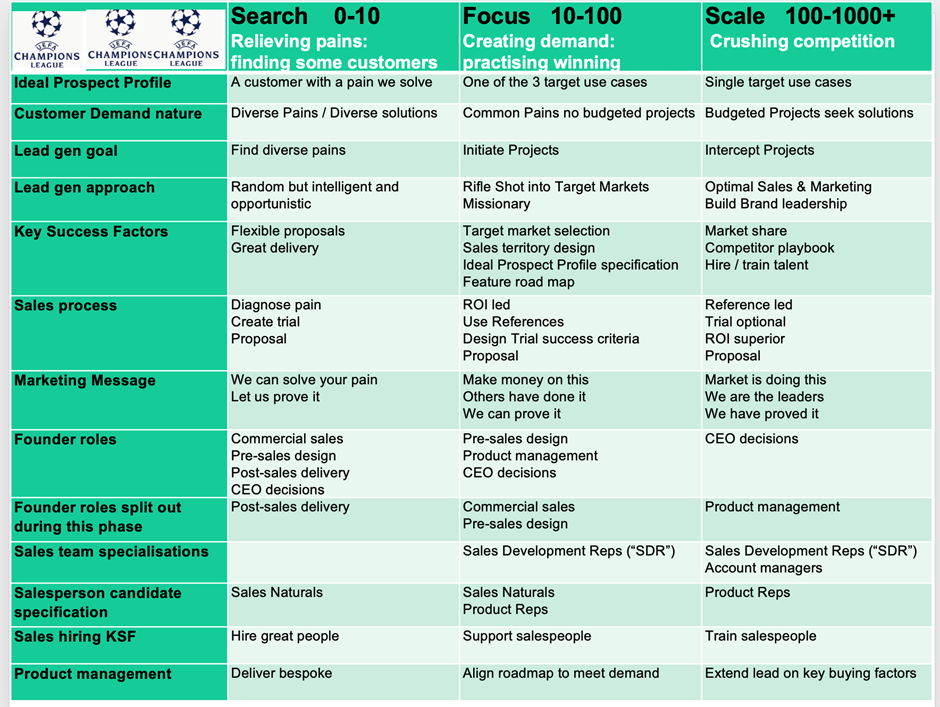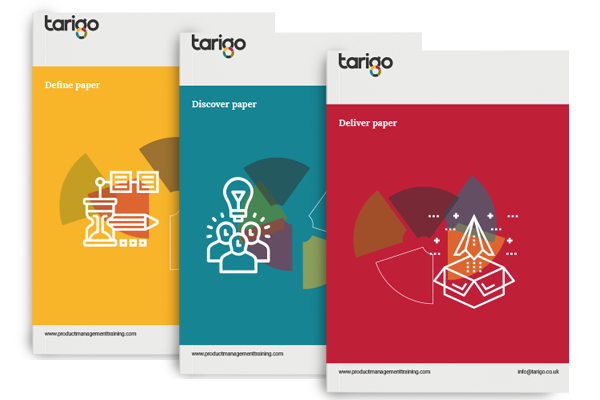Blogs > Product Management Training
With Management Metrics - you can Make Magic
By Stephen Allott - Chairman
-1737992668.png)
Driving your product to win in the marketplace needs the right dashboard metrics. What are the right metrics or KPIs for you?
How should you customise your dashboard for your personal situation?
Many people start with the common SaaS set of monthly metrics such as ARR, revenue retention and CAAC. And that is a good place to start. But what metrics would a blackbelt use?
Let’s look to the CEO, CEOs are supported by strong finance and sales operations teams, and they have a rich suite of metrics. What can a product manager learn from a CEO?
Building your dashboard – what metrics should you choose?
Tarigo Product Management Training recommend 4 different types of metrics:
· Start with the things you already know are important. They can include.
o
Numbers that have always been important in the
business
o
Critical goals from your strategy or planning
process.
o
Things you know from experience are useful to
measure.
· Monitor your strategy or growth plan milestones to check you are on track.
· Use Decision Engineering, to design your metrics. Start with the management decisions that you take regularly and then identify the metrics or information that you need to have in front of you to make the highest quality decisions?
· Fourth and finally, there are things that become important along the way even though you did not appreciate their importance at the outset. Tarigo call these Just in Time Metrics. Don’t bother with designing Just in Case Metrics. Set your Just in Time Metrics when you encounter them.
Use a configurable metrics dashboard that is easy to build, easy to share and easy to comment on. A shared Google sheet is a great prototyping tool. Other dashboard tools are available, such as.
- Google Data Studio: Free tool for creating
customizable dashboards with Google Analytics.
- Tableau: Flexible data visualisation
software.
- Power BI: Robust analytics tool suited for
business intelligence.
- Looker: Cloud-based platform focusing on
business intelligence and analytics.
You are now in the driving seat, but make sure it’s right for you.
Winners keep asking these 5 questions:
- Are we going to make our numbers?
- Are our tactics working?
- If a change is needed, what was our initial hypothesis, and for what needs to change?
- Do we need to change something? Or do we just carry on?
- If a change is needed, what was our initial hypothesis, and for what needs to change?
Different industries and different products need different metrics. A car business and a database business are different.
Even identical businesses can have different growth motions. Fashionable ‘Product Led growth’ has joined the more traditional ‘Marketing Led’ and ‘Sales Led’ motions. You can mix and match all three and use tools from Danish company, Dreamdata, to create holistic revenue attribution data. Dreamdata is a B2B revenue attribution platform that helps businesses understand what drives their revenue.
Winners measure the Right Thing as well as measuring the Thing Right
Measuring the Right Thing means measuring things like leads, sales and customer reference-ability. The Right Thing will vary by each function in the revenue cycle. New Business Sales, Implementation, Customer Success, Account Management and Renewals each have their critical measures. For sales it’s about hitting the target. Implementation is about getting it into production. Customer Success is about realising the projected ROI. Account Management, like Sales, is about hitting the target and saturating the account while Renewals is about retention.
Your strategy or quarterly plans will have business improvement initiatives. Entering a new vertical market, entering a new country or testing a new lead gen or sales process are all examples of an initiative. The Right Thing is to measure the success of your initiatives.
The Right Thing to measure will vary by category
maturity and market share. Pioneering a new product category where you educate
the market that you have a solution to a previously unsolved problem is very
different from entering an established market with a low-cost competitor. A
market leader measures their performance differently from a challenger. Our “3
Act Drama” model explains how the game changes in each Act of the Drama.

3 Act Drama Model
Winners constantly want to know whether they are On Track to Win. Knowing what has been sold is different to getting a sales forecast. The question is Are we going to make our numbers? Tarigo advise adding the bookings made to the value of deals forecast still left to close to produce our favourite metric: the Outlook. This is the Past + the Future. It is the prediction of whether you will make your plan. Measuring the thing right means predicting the future on top of recording the past.
Another aspect of measuring the Thing Right is the measurement interval. When are quarterly targets best, and when are monthly targets best? Even annual or weekly targets might make sense in some cases. Modern SaaS theory stresses Future vs Past monthly growth rate metrics. That can make you quite passive as you watch the business grow. On the other hand, striving to hit a quarterly target will drive innovation and effort. Popular KPIs for SaaS include Monthly Recurring Revenue (MRR), Customer Acquisition Cost (CAC), Customer Lifetime Value (CLTV), Churn Rate and Net Promoter Score (NPS)
Getting the Thing Right can mean metrics will vary by product type. Hardware, SaaS software, Enterprise software and Services may all need different metrics.
While Business is more about the money, Products are more about the customer, Business management and Product management can be very close. Design your metrics together to win.
Tips
At one of our clients, the ‘CEO weekly whiteboard tour’ visited each department for a 30-minute standing review around their KPI whiteboard. We used thin black tape to create neat lines on the whiteboard. Numbers were written up in pen. All the team gathered around for the presentation and discussion. Best practices of winning teams included.
DESIGN RIGHT
- Adopt a Customer-Centric Approach: Prioritise
metrics that directly measure customer satisfaction, or metrics that
relate to the customer journey.
- Balance Quantitative and Qualitative Metrics:
Combine quantitative data with qualitative feedback to identify root
causes of problems and opportunities for improvement.
- Align Metrics with Business Goals: Aligning metrics with business goals, ensures your data efforts are focused on what matters most.
MAXIMISE VELOCITY
- Utilise Real-Time Data: Respond quickly
to changing market conditions and highlight the importance of data driven
decision making.
- Establish Benchmarks: To measure
progress and identify areas for improvement.
- Prioritise Actionability: Create a culture of high support & high performance. Hold teams accountable but also provide the full support and remove blockers.
CONTINUOUSLY IMPROVE
- Regularly Review and Iterate: Regularly
assess the effectiveness of the metrics and the meetings and make
adjustments as needed.
- Involve Stakeholders and Resources: Ensure
employees have the resources & support they need to achieve the
metrics and goals.
- Use Cohort Analysis for performance comparisons: To identify the factors that drive customer retention & loyalty.
"Measure What Matters" by John Doer Read it here
This book is a great resource for understanding OKRs (Objectives and Key Results), which can be applied to KPI design.

Product Management Bootcamp and Pro-Series
Our Bootcamp training is the most complete course for product management, taking you from ideation through to delivery and iterative improvements.
About Tarigo
We enable product managers to drive success.Established in 2003, Tarigo has built an enviable reputation for delivering high-quality training and consultancy solutions to product managers throughout Europe and the USA.
Our fresh approach to product management training has proven incredibly successful and our capability to adapt to clients’ training and consultancy needs has only helped to further this success.


